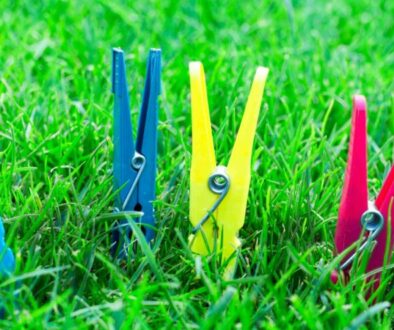9 Powerful Eco-Friendly Fashion tips on a Smart Budget
Discover ingenious eco-friendly fashion hacks that won’t break the bank. Elevate your style while reducing your carbon footprint with these budget-savvy tips!
In a world where environmental consciousness is growing, making eco-friendly fashion choices has become more important than ever. Absolutely! This blog post will provide you with an introduction to the exciting possibilities of eco-friendly fashion on a smart budget.
The Rise of Eco-Friendly Fashion
Fashion has come a long way from being just about looking good; it’s about feeling good, too. Earth-friendly fashion, often known as sustainable fashion, has gained massive popularity in recent years. It’s a movement that focuses on clothing production and consumption practices that have minimal negative impacts on the environment and society.
Here’s a look at some key aspects of eco-friendly fashion:
Ethical Sourcing
Sustainable fashion brands prioritize ethical labor practices. They ensure that workers are paid fairly and work in safe conditions. Opting for these brands means actively endorsing humane working conditions By choosing such brands, you’re supporting humane working conditions. Selecting sustainable fashion brands is a conscientious step toward promoting a more equitable and compassionate working environment.
Eco-Friendly Materials
Eco-friendly materials have revolutionized the fashion industry by offering sustainable alternatives to traditional fabrics. One standout example is organic cotton, which is grown without the use of synthetic pesticides or genetically modified seeds, significantly reducing the environmental impact associated with cotton production. These materials are grown or processed in ways that minimize their ecological footprint.

Reducing Waste
Fashion brands are actively minimizing waste by creating durable, long-lasting clothing and cutting down on production excess. This not only reduces the clothing overflow in landfills but also provides cost savings for consumers in the long term. By investing in quality, long-wearing pieces, individuals can enjoy their favorite garments for more extended periods, lowering the need for frequent replacements and saving money. This eco-conscious approach proves that sustainability can align harmoniously with economic practicality.
Local Production
Local production in fashion is gaining prominence as a sustainable choice. It involves creating clothing and accessories within a specific region, reducing the environmental impact associated with long-distance transportation as it involves carbon emission. This approach also strengthens local economies, ensures ethical labor practices, and fosters a stronger connection between producers and consumers. Embracing local production aligns with both sustainability and community development goals.

Second-Hand and Vintage
Thrifting and purchasing vintage items are excellent eco-friendly choices that extend a garment’s life cycle. Plus, they often come with more affordable price tags. So their main advantage is they are budget friendly, i.e: less harsh on pocket.
What eco-friendly fashion involves in it?
Let’s explore how you can build a sustainable wardrobe on a budget.
Building a Sustainable Budget Friendly Wardrobe
1. Wardrobe Assessment
Start by assessing your current wardrobe. Take a good look at what you have, what you frequently wear, and what you don’t. This will help you identify gaps and avoid buying items you don’t need.

2. Invest in Versatile Pieces
Instead, of chasing every fashion fad, prioritize timeless and adaptable pieces. Examples of such wardrobe staples include a classic white shirt, well-fitted jeans, and a little black dress, which can be effortlessly combined to create a variety of stylish ensembles. These adaptable pieces serve as the core of a stylish and functional wardrobe. Your contribution to eco-friendly fashion will be greatly appreciated.
3. Prioritize Quality over Quantity
Sustainable clothing might be more expensive upfront, but it’s an investment that pays off. High-quality materials and craftsmanship mean fewer replacements and less waste over time.
4. Thrifting and Second-Hand Shopping

For environmentally-conscious consumers, thrift stores, consignment shops, and online second-hand marketplaces are like hidden gems. These places offer a treasure trove of opportunities to discover one-of-a-kind, high-quality items, all priced at a fraction of their original cost. In these settings, eco-minded shoppers can unearth sustainable fashion treasures without breaking the bank, making it a win-win for both style and the planet.
5. Host Clothing Swaps
Organize clothing swaps with friends and family. This not only adds new pieces to your wardrobe but also helps others in your circle embrace sustainable fashion.
6. DIY and Upcycling
Get creative with your clothing by upcycling old items. Turn worn-out jeans into stylish shorts, or revamp a plain t-shirt with some DIY tie-dye. This not only saves money but also gives your wardrobe a personal touch.
7. Seasonal Capsules
Create seasonal capsules by selecting a few key pieces that can be mixed and matched throughout the season. This reduces the urge to constantly buy new items to keep up with changing trends.
8. Swap Fast Fashion for Slow Fashion
While slow fashion brands may seem pricier, they often offer high-quality, eco-friendly options that are worth the investment. Consider saving up for these pieces rather than going all out on fast fashion. You can contribute to the world with eco-friendly fashion.
9. Clothing Rental Services
For special events, contemplate clothing rentals or secondhand clothes instead of purchases. This practice lowers the need for fresh attire and cuts down on wardrobe congestion. Renting outfits is a sustainable choice, reducing the consumption of new clothing and keeping your closet more organized.
Embracing eco-friendly fashion on a budget is not only possible, but also rewarding. By following these tips, you can build a wardrobe that reflects your style, values, and commitment to the environment without straining your budget.
Remember, every small step towards sustainable fashion counts. By making conscious choices and being mindful of your purchases, you contribute to a more sustainable and responsible fashion industry.
So, go ahead, revamp your wardrobe, and show the world that style doesn’t have to cost the earth.



